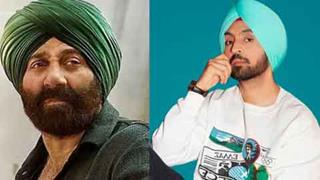The trend of the seductive and fascinating heroine began a long time ago with Yash Chopra's Ittefaq starring Nanda in the best role of her career pitted against Rajesh Khanna and Bindu -not playing the vamp she usually did.
Nanda is a beautiful housewife demurely dressed in a turquoise chiffon sari and a diamond mangal-sutra round her neck but she is a cold-blooded murderer who does not have any qualms about fixing the blame on an innocent man who rushes into her house for shelter.
Rekha plays the over-ambitious wife with stardust in her eyes who gets close to her husband's friend and arranges to have her husband pushed off a running train in Do Anjaane. Shabana Azmi depicts the true-life Santokba, the dreaded woman mafia 'king' in Godmother.
Kajol in Gupt, the psychotic serial killer, Urmila Matondkar in a different version of Fatal Attraction in Pyar Tune Kyon Kiya, Lara Dutta in Jurm, Kareena Kapoor in Fida, Bipasha Basu in Jism, Katrina Kaif and Bipasha Basu in Race, Priyanka Chopra in Aitbaar, Yakeen and now in 7 Khoon Maaf – the list keeps growing.
What makes these 'negative' heroines tick? Their innate sex appeal multiplied several times over. This is not necessarily by flashing a thigh or showing a cleavage, which 'positive' leading ladies also do and with as much élan.
Kajol, for instance, does not have to show cleavage in Gupt. The appeal is of the forbidden, like the alluring apple of Paradise. The love scenes are stylish, flamboyant and brazen as illustrated in Aitraaz where Priyanka tries to seduce Akshay Kumar.
The script keeps its options open to flash these shots over and over again in the courtroom scenes, adding to the curiosity of onlookers and their vicarious pleasure. The scenes of intimacy between John Abraham and Bipasha Basu in Jism would not have been as sizzling had not the director cast them in a steamy story oozing with sex and murder.
These stars are "strange, erotic, ambivalent, and cruel, " adjectives used by noted French critics Raymond Borde and Etienne Chaumeton while attempting to define film noir.
 Unlike traditional vamps like Helen, Lalita Pawar or Bindu of yesteryear, these women sustain an air of being elusive – always out
of reach just when you feel you have got them in your grip. And you keep pining for more.
Unlike traditional vamps like Helen, Lalita Pawar or Bindu of yesteryear, these women sustain an air of being elusive – always out
of reach just when you feel you have got them in your grip. And you keep pining for more.
In the past, things were different. Not in our wildest dreams would we have conjured up a 'negative image' of Meena Kumari or Nargis or Vyjayantimala doing an item number or seducing the hero or trying to switch on their erotic charm to woo the men even if the characters were so-called ' non-heroine' like.
In Kamaal Amrohi's Pakeezah Meena Kumari is a tawaif, in B. R. Chopra's Sadhana Vyjayantimala is a sex worker, and Nargis in Adalat has her daughter refusing to acknowledge her mother. They still came across as their typical, 'pure' screen selves they were modeled on.
Even the alcoholic 'Chhoti Bahu' Meena Kumari in Guru Dutt's Sahib Bibi aur Ghulam drew sympathy, not intrigue or appeal or anger.
Like the Hollywood film noir, French term that means 'black film', women given negative characterizations emphasize cynical attitudes and sexual motivations.
Susanna in 7 Khoon Maaf could easily have divorced her husbands instead of bumping them off in different ways, mysteriously aided and abetted by her loyal staff.
But as an episode of childhood shows, like the dog she killed who came in her regular route to school instead of changing her route, she prefers to take a short cut to freedom. She is evil. Vishal Bharadwaj's 7 Khoon Maaf identifies closely with film noir as we understand it within Hollywood.
It is enriched by a definite visual style designed by cinematographer Ranjan Palit highlighted by low key lighting and unbalanced compositions where the camera follows the characters around in dimly lit, eerie images casting more shadows than light.
There is always an audience for crime dramas with morally reprehensible protagonists. The appeal is more if this protagonist is a woman who is not guilty of what she thinks or plans or does and therefore, the audience is not disgusted by the immorality of her actions.
It does not want to be judgmental about her because she entertains, seduces and titillates the audience. The screen images these leading ladies have are flexible enough to allow for swinging the pendulum either way without hurting the audience or the box office or the star's image within and without the screen.
Their public image is enhanced by their versatility and not tarnished as one would expect.
But feminist critics do not agree. They insist that negative representations of women are necessary for the successful functioning of patriarchic culture. They argue that patriarchal mythology focuses most prominently on heroes while female experience is generally silenced, or compromised.
 So the hero's tale is told as if it were universally representative of human
experience. Is it? This raises another important question. Are not the terms 'positive' and 'negative' defined and determined by
patriarchal norms?
So the hero's tale is told as if it were universally representative of human
experience. Is it? This raises another important question. Are not the terms 'positive' and 'negative' defined and determined by
patriarchal norms? Aren't they therefore subjective terms that shift connotation according to perceptions, context, time, culture and space? Because if the negative woman is indeed 'negative' and evil and violates the 'norms' that define the 'good' woman, then where would you place Phoolan Devi of Bandit Queen?
Looked at from a different perspective, would you not wonder whether the 'negative' heroine was actually confronting patriarchy by breaking the rules set out for all women everywhere?
By taking on the leadership of a gang of dreaded dacoits, Phoolan Devi broke the rules she was brought up in and was therefore, in an attempt to strip her of her power that she 'appropriated' from the male, punished by the gang rape.


















